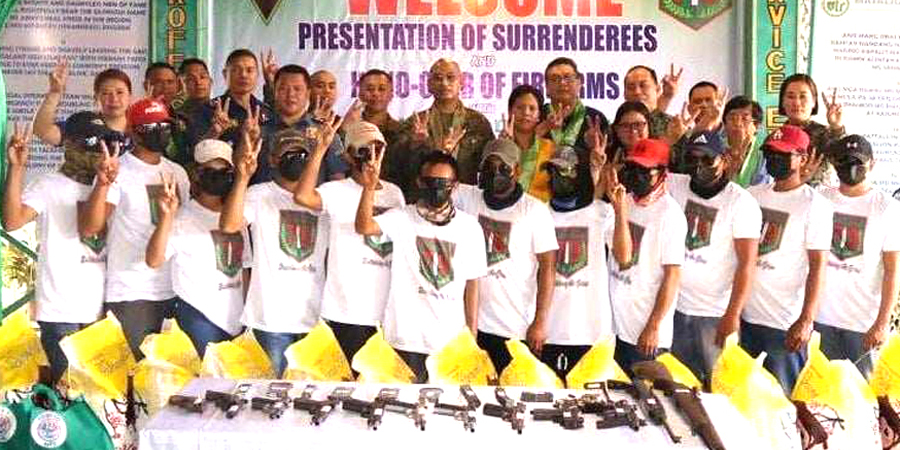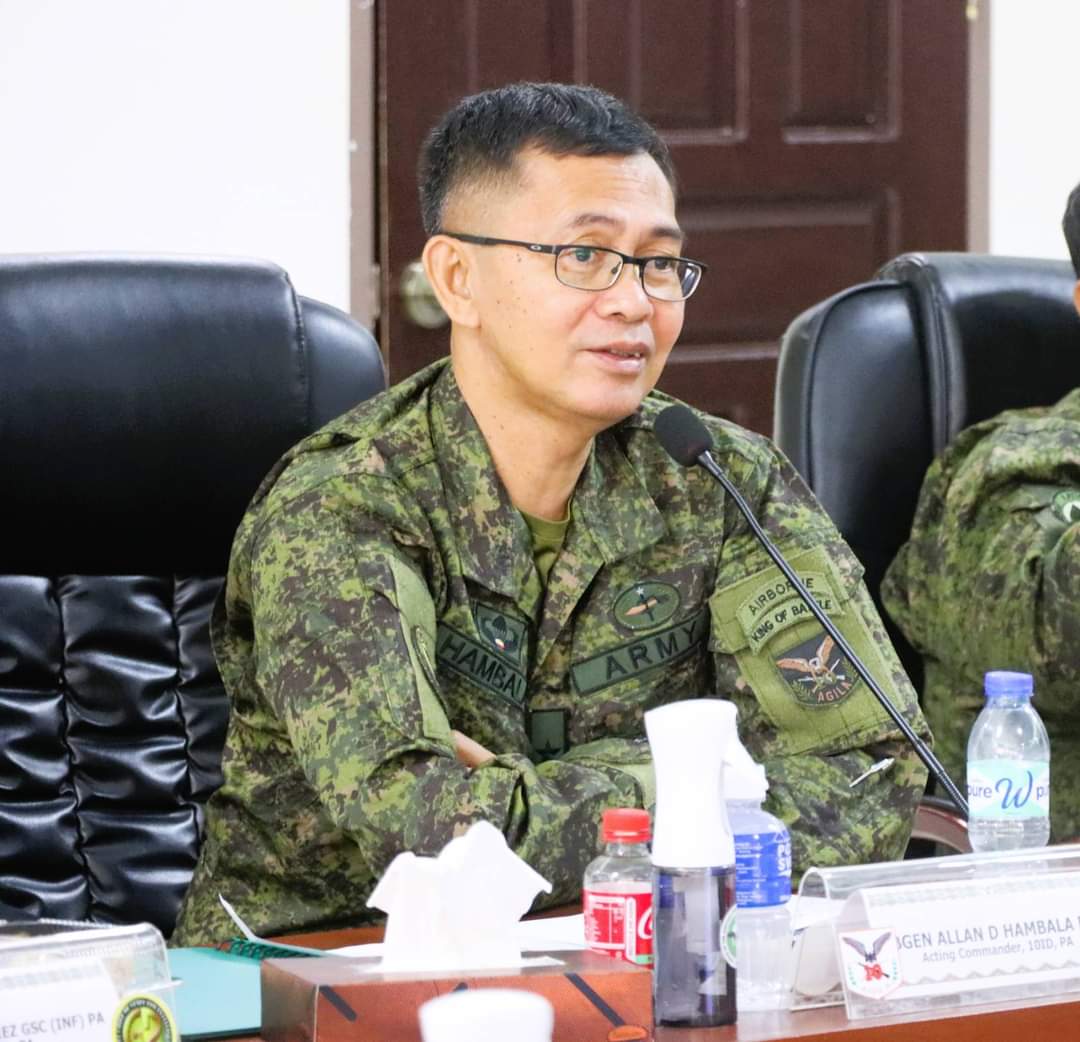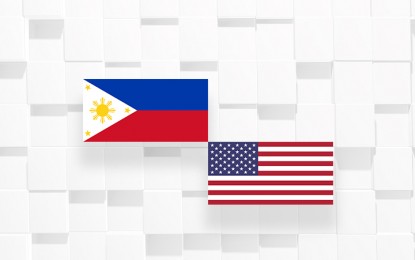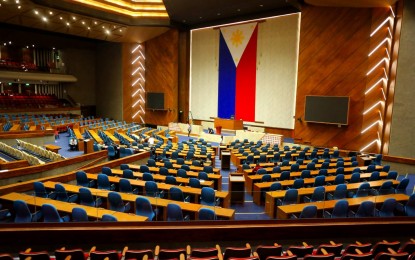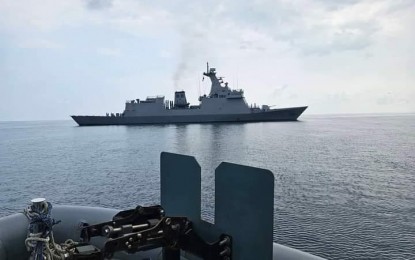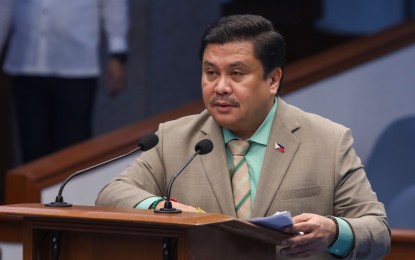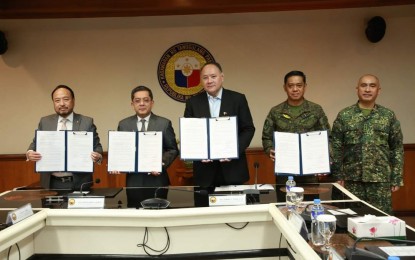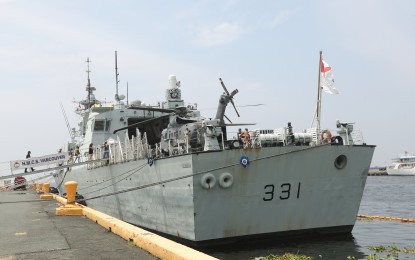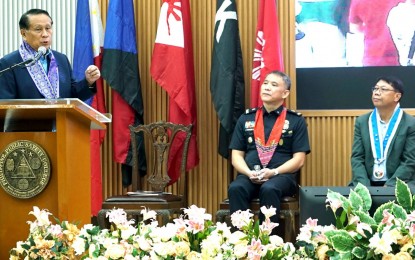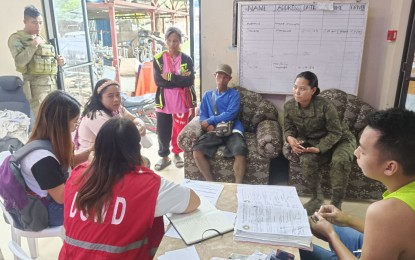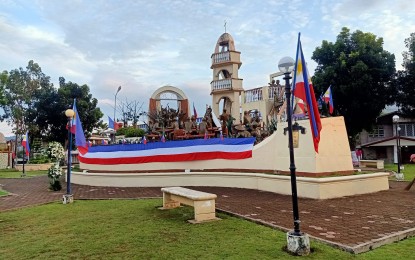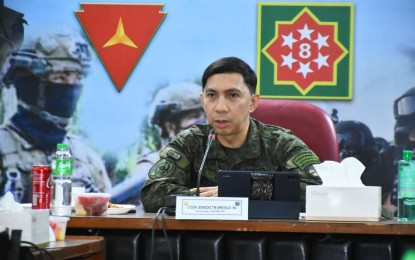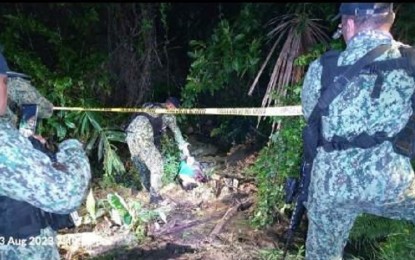From the Philippine News Agency (Sep 30, 2023): US exploring options to help PH, SEA states boost maritime defense (By Joyce Ann L. Rocamora)
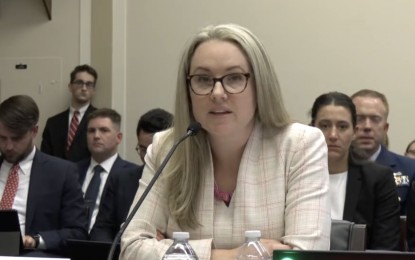 Deputy Assistant Secretary of Defense Lindsey Ford during the US congressional hearing on the situation in the South China Sea (Screengrab from US House of Representative Committee on Foreign Affairs feed)
Deputy Assistant Secretary of Defense Lindsey Ford during the US congressional hearing on the situation in the South China Sea (Screengrab from US House of Representative Committee on Foreign Affairs feed)MANILA –
The United States is identifying ways to help boost the maritime security capabilities of Southeast Asian states, including the Philippines, in the South China Sea, the US Department of Defense (DOD) said Friday.
Deputy Assistant Secretary of Defense Lindsey Ford made the statement at a US congressional hearing as she took note of China’s “broader efforts” to expand its military footprint in the South China Sea.
“While our allies and partners have taken great steps to stand up for our shared vision, the DOD is taking an increasingly proactive approach to counter PRC (People’s Republic of China) coercion,” she said.
“We are laser-focused on identifying new and cost-effective emerging technologies that will bring greater capability to our allies and partners more quickly.”
Ford said since 2016, the DOD has allocated more than USD475 million in capabilities to allow its partners in Southeast Asia “to sense, share, and contribute to regional maritime security” in the region.She said the DOD is exploring the possibility of providing its allies with unmanned surface and subsurface systems for situational awareness, mesh networks for at-sea communications, undersea sensing, and expeditionary logistics capabilities, such as 3D printing and modular at-sea resupply.
Delivery of these systems, she said, will also be complemented with system-specific training, tactics, techniques, and procedures for creative employment options.
In her submitted statement to the US House of Representative Committee on Foreign Affairs hearing, “Lasers and Water Cannons: Exposing China’s Harassment in the South China,” Ford argued that China’s actions over the contested region are not isolated incidents.
“These actions demonstrate a pattern of increasingly risky and coercive behavior, a manifestation of PRC’s growing willingness to use its military instrument of power to achieve its foreign policy objectives,” she said.
Ford pointed out that China, over the past decades, added “more than 3,200 acres of land to its seven occupied outposts” in the Spratlys, which now feature airfields, berthing areas, and resupply facilities.
Since 2018, she said, China has “steadily equipped its Spratly Island outposts, including Mischief Reef, Subi Reef, and Fiery Cross, with an increasing array of military capabilities.”
Ford said China uses these outposts “to support People’s Armed Forces Maritime Militia (PAFMM) vessels, People’s Liberation Army Navy (PLAN) deployments, and China Coast Guard (CCG) operations in the South China Sea, including routine harassment of Southeast Asian nations’ vessels and assets, undermining these nations’ sovereign rights under international law.”
“We’ve witnessed a sharp uptick in coercive and risky operational behavior by the PRC, threatening the safety not only of US forces but of allied and partner forces operating in the South China Sea,” she said.
Rep. Young Kim of California's 40th congressional district, chair of the House Subcommittee on Indo-Pacific, said she has witnessed the situation over the disputed waters and agrees that the US must support the small littoral states in the region.
Kim last month led a bipartisan congressional delegation to the Philippines and flew on a mission with the US Navy over the South China Sea.
“(What) we saw is congestion. Instead of open water, we saw civilian fishing fleets from South Asian countries, patrols from the Philippine Coast Guard, and vessels from PLA Navy and Chinese Coast Guard – by far the largest and the most common vessels in the sea, all vying for the same waters and islets,” she said.
She added that when they flew near the BRP Sierra Madre in the Ayungin, the Chinese Navy radioed their aircraft and demanded that their plane turn around while claiming they were flying over “Chinese territorial waters.”
“This was clearly a bullying tactic, intimidation tactic. Our partners in the region need our help, and our allies are questioning if the US will be there to help if CCP (Chinese Communist Party) escalates aggression in the South China Sea,” she said.
“Congress must take the CCP’s aggression in the South China Sea seriously and ensure that our allied nations are getting the assurances that they need. This starts with ensuring our military is supporting these countries’ maritime domain awareness missions.”
Kim said the US must also strengthen its economic relations with Southeast Asian states, adding that the Biden administration’s rhetoric about trade in the region has been positive “but has not been met with deliverable.”
On Thursday, Executive Secretary Lucas Bersamin said the Philippines is “seriously” studying the case buildup against China in the wake of its installation of floating barriers at the Scarborough Shoal, also known as Bajo de Masinloc.
The barriers have been removed as ordered by President Ferdinand R. Marcos Jr.
“We have always conducted our relations, (our) foreign policy on a strictly diplomatic tact. Wala tayong (We do not have) aggressiveness or aggression or what,” Bersamin said in an interview. “But whether or not we will file another case against China is one of the options, and I think our lawyers are seriously giving this a study.”
In a media interview on the sidelines of rice distribution in Siargao Island, Surigao del Norte on Friday, Marcos said he would always assert the country’s rights over Philippine waters, but clarified that he is not picking a fight with China.
“Hindi tayo naghahanap ng gulo. Basta gagawin natin, patuloy nating ipagtatanggol ang Pilipinas, ang maritime territory ng Pilipinas, ang mga karapatan ng mga fishermen natin na mangisda doon sa mga areas kung saan sila nangingisda daang-daang taon na (We are not looking for trouble. What we will do is continue defending the Philippines, the maritime territory of the Philippines, the rights of our fishermen who have been fishing there for hundreds of years),” he said.
He added that he would not allow foreign entities to put up a barrier “that is within the Philippines.”
“But in terms of taking down the barrier, I don’t see what else we could do dahil talaga ‘yung mga fishermen, noong pinutol ‘yong tali, ‘yung mga nakapasok na fishermen noong araw na ‘yun, nakahuli sila ng 164 tons na isda. So, sa isang araw pa lang ‘yun (because when the barrier was removed, the fishermen who entered that day caught 164 tons of fish. So, that was just in one day),” Marcos said.
https://www.pna.gov.ph/articles/1210860


